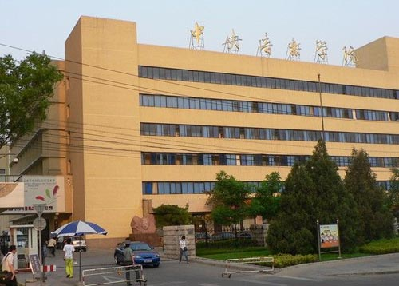| |
Music exchanges with the outside world are one of the important cultural exchanges of China. For over 40 years since the founding of the People’s Republic of China (New China), the development of music art in China has tortuously experienced different stages, including the stable development in 1950s, the devastation during the Cultural Revolution, and the unprecedented prosperity after the reform and opening-up. Every step echoes the progress of the cause of the socialism and is branded with the mark of the era.
Music is the most international art form. For a long time, the Chinese musicians have been vigorously inheriting and developing their traditional folk music, as well as introducing healthy and enlightening music art from abroad to enrich the Chinese music. As early as 1930s, two famous Chinese musicians and educationists Xiao Youmei and Huang Zi went to Europe and the U.S. to study the expression forms of western music. Later they came back home to promote the teaching system of western music in the schools started by them. Besides, they invited a batch of foreign professionals to give instructions in China to cultivate Chinese musical talents. After the founding of the New China, music has been playing an important part in its cultural exchanges with the outside world as an important art form. On one hand, foreign music educationists have been introduced to China and students have been sent to study abroad to cultivate music talents quickly; on the other hand, many music groups and musicians from the Soviet Union, East Europe, Asia, Africa and Latin America were invited to perform in China, enabling a widespread popularity of excellent foreign songs, especially the revolutionary songs from the Soviet Union.
After the ten years of stagnancy during the Cultural Revolution, China welcomed an era of prosperity and development of extensive music exchanges with the outside world. Groups of distinguished Chinese composers, conductors and singers went abroad to showcase the development of the Chinese music art to music lovers across the world. Many well-known foreign music groups and musicians began to be staged in China more frequently, conveying the message about the latest development in the contemporary music arena. The music exchanges have functioned as a bridge of friendship between the Chinese and people from other countries.
Section I The stable development of music exchanges with the outside world
The years from the founding of the New China to 1966 witnessed the expansion of music exchanges between China and foreign countries. China had sent some music groups and musicians to perform in the Soviet Union, East Europe, Asia, Africa and Latin America and exchange learning with musicians in other countries, which enhanced the understanding and friendship between the Chinese and foreign musicians. Guo Lanying and Wang Kun were among the first group of distinguished Chinese artists who went abroad and took part in music exchange activities. After the founding of the People’s Republic of China, national academies and groups have been established successively to develop the cultural and artistic undertakings in China, which facilitated international music exchanges. However, the New China was still young and everything was waiting to be taken up. There was also a talent shortage in the music field in China. To improve the situation quickly, Chinese government put more efforts on art education. Therefore, music education became the main stage for international music exchanges during that period.
I. The full introduction of the Soviet teaching mode
The Central Conservatory of Music (CCOM) was officially established in 1950, the first higher music institution in the People’s Republic of China. To fasten the cultivation of music talents and boost the development of the socialist music undertaking, CCOM decided to fully introduce the Soviet teaching mode. Since 1954, CCOM designedly hired a large number of experts with different specialties from the Soviet Union and socialist countries from East Europe. The policy of comprehensive study of the Soviet Union was adopted in teaching. The syllabus and textbooks of all the subjects were all copied from the music academies of the Soviet Union. In May 1954, Lv Ji, a Chinese composer, and Zhang Hongdao, a musicologist, conducted a systematic study of the music education in the Soviet Union with “Sino-Soviet Friendship Delegation” and visited Moscow P.I. Tchaikovsky Conservatory.
 The Central Conservatory of Music
The Central Conservatory of Music
|
|
